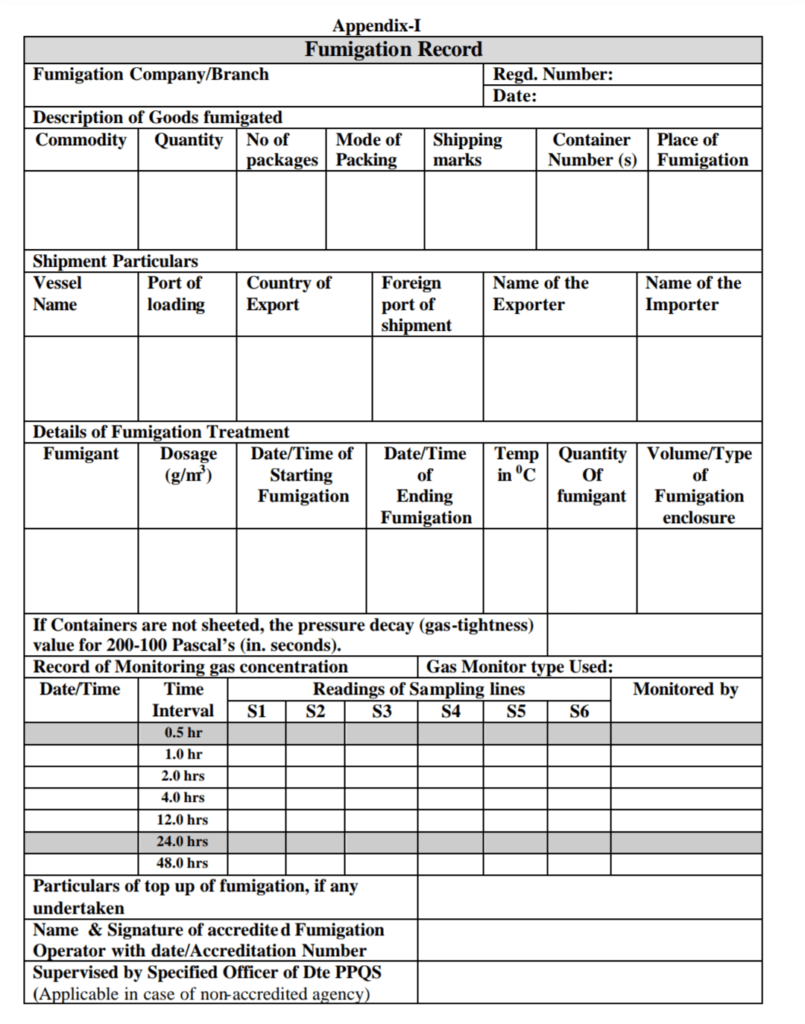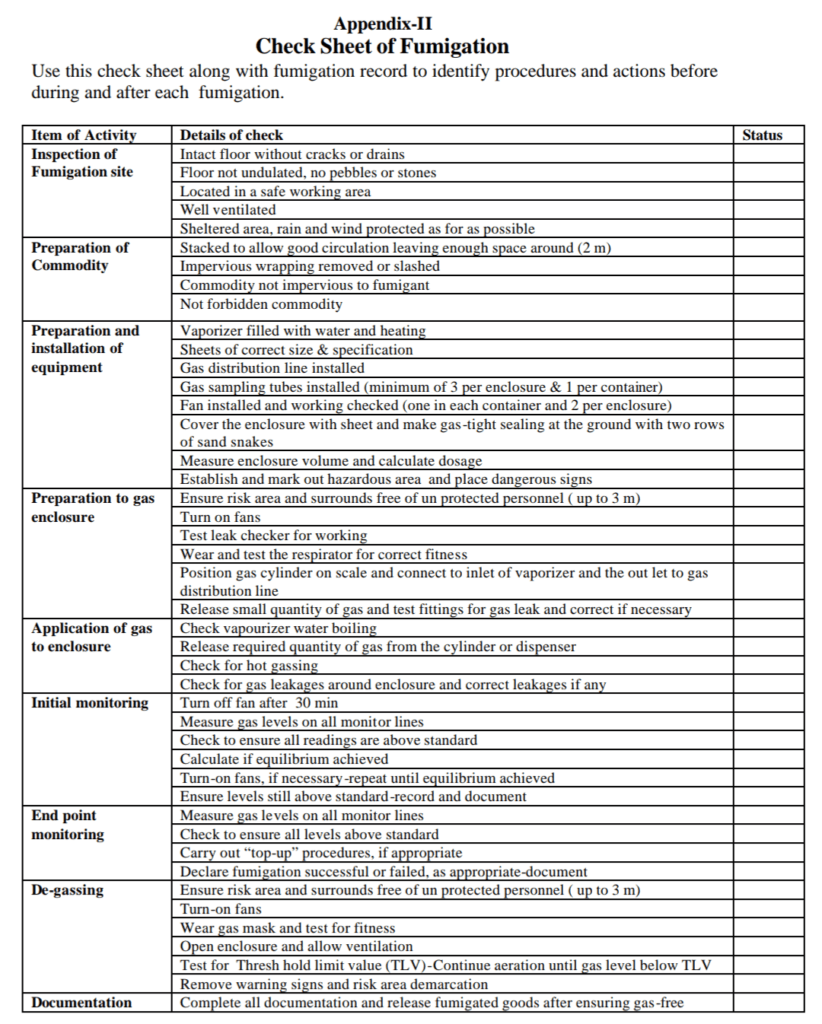Practices to attain Fumigation certificate under the Phytosanitary measures governed by the Plant Quarantine Regulatory sect are becoming severe and rigid globally. Especially, because they are the first line of defense to avoid pests from entering any nation.
Besides agricultural products, plants and wood logs can act also as a vector in the transmission of exotic pests. Hence, they are also circumvented by regulatory measures imposed on wooden pallets by European Union Measures.
Achieving pest-free consignment
To get past the Regulating Authority of Exporting Country, IPPO one must deliver a pest-free consignment by issuing a fumigation certificate. Accordingly, this can be achieved by:
- Heat treatment- Wood packaging material is subjected to the extreme heat that is 56°C for 30 minutes. While other goods like agricultural products need less heat.
- Fumigation- The fumigation of material with Methyl bromide at an estimated 48gm/cum at 21°C for at least 30 minutes.
Fumigation
A key component in the Phytosanitary procedure that avoids the pest entrance via consignments. Further, it is mandatory to issue a fumigation certificate to achieve the Phytosanitary certificate. Thereby, influencing the import of the consignment into a country. So, fumigation is the course of the carnage of pests, termites, or any related harmful living organisms that pose a risk to the country. Accordingly, execution is by suffocation and poisoning by using fumigants at a confined space.
The gaseous chemicals that aid in eliminating pests from the cargo are the fumigants. Such as Methyl Bromide, Chloropicrin, Phosphate, Dichloropropene, Methyl isocyanate, Hydrogen cyanide, Sulfuryl fluoride, Formaldehyde, and so on. However, the most common among these is Methyl Bromide. Also, the fumigation can be either prior to filling the cargo or after the consignments are placed into it. Despite its effect, it is also necessary as it can penetrate at the steepest holes and diminish pests.
An ideal Fumigants
Note that all toxic gases aren’t considered fumigants. Most of them are rejected due to their properties of chemical instability and high toxicity that have a lasting effect on surrounding too. Thus, a list is generated that encompasses the property requirement of fumigants. That is as follows,
- High penetration capabilities
- Safe
- Less toxic to surrounding (Humans and animals)
- Readily and easily toxic to pest at low concentration
- Compatible with the consignment commodity
- Low Boiling point and insoluble in water
- High diffusion and highly aerated
- Must not possess after effects
- No foul smell and must not disturb the consignment goods smell
- Should not corrode metals
- Absorption rate should be low
Points to Remember while Carrying out Fumigation
Care is a necessity while performing fumigation, be it handling the fumigants or other related chores. Highlight that, any fumigation process must abide by the ‘Guidelines of assessment, accreditation, and auditing of fumigation agencies”. Furthermore, it is important to emphasize that the operators must have adequate knowledge relating to the subject. Moreover, it is advised to perform the process only if:
- Care while sealing the cargo.
- The operators and workers can be away from the enclosure.
- Fumigant can be cleared following the completion of the process.
- Application of adequate quantity of fumigant with harm.
The Treatment
All the treatment must follow PQ regulations. While the consignments enclosure follows Schedule- VI and VII of PQ depending on the offshore or onshore treatment. On the other hand, the export treatment will perform to satisfy the Phytosanitary requirements of the nation and in compliance with ISPM-5. Further, the documents of Appendix-I and Appendix-II for record and checklist purpose is important.


Specific necessities to be considered during the process
- Properties and use of the fumigant (most commonly Methyl Bromide)- Check its Physiochemical properties, its safety, storage and transport, temperature requirement, and finally, calculate the formulation required.
- Make note of commodities that can not be exposed to the fumigant
- Fumigation of the consignment with standard packing and perishable commodities
- Timber and timber products- must have at least one dimension, must be separated and maintain adequate distance
- While performing fumigation- Initially accredit the fuming agency and select a fumigation site. Then perform fumigants bearing in mind all the guidelines
The completion of the protocol will fetch a fumigation certificate that confirms a pest-free consignment. This, in turn, influences the smooth flow of export/ import transaction.